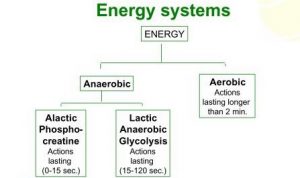
Human energy systems – how we convert, store and use energy is intrinsically linked to weight loss and fitness.
Understanding how your body works is vital if you want to improve its performance and shape. How we use and store fuel defines our body shape and efficiency – an easy way to understand this is to compare our bodies to a car.
The engine is your heart and lungs, which work all day every day supplying energy to your muscles, brain, all your vital organs and generally allowing you to run, smile, think, or anything you might be doing at this particular moment.
Your body is the result of millions of years of design and evolution, and like a futuristic hybrid car, you use three different energy systems, each with its own fuel. The dominant energy system, the fuel used, how long it lasts and its waste product has huge implications on how we train to get fitter and the sort of training that we should do to burn fat. The Diets Don’t Work Method taps in to this knowledge and leverages it for maximum success.
1. Oxygen energy system
In the hybrid car this is like using diesel. When exercise is moderate and continues for a long time we use oxygen, fat and glycogen (blood sugar usually made from carbohydrate) to make energy. There’s no waste produced by this energy system (except heat) so it provides an indefinite supply of energy so long as we replenish it with food. Glycogen and fat are burned in the presence of oxygen, so it is AEROBIC.
Intensity: the oxygen system is dominant from rest up to 60% of maximum effort.
Fuel Source: Glycogen and Fat.
2. The Lactate energy system
In the hybrid car this is like using petrol. This is our middle energy system, delivering a fast supply of energy for more intense exercise. Higher intensity means however there is a compromise; it only lasts for 30 seconds up to 2 minutes. It also takes longer to refill, from 20 mins to 2 hours. This is because this energy system produces waste – lactic acid – which accumulates in the muscles and makes them fatigue. The body needs to break down and remove this waste which takes time. In exercise, this is the feeling of burning in the muscles and an urge to stop. There is no oxygen present when this system is dominant, so it is ANAEROBIC.
Intensity: the lactate system is dominant from 60-95% of maximum effort.
Fuel Source: Glycogen (blood sugar).
3. The Creatine Phosphate energy system
This is energy system no. 3. In the hybrid car, this is like rocket fuel. Basically, we use this one for fast powerful movements, like jumping out of the path of an oncoming train. The fuel used for this is creatine phosphate, which we keep in our muscles ready for immediate use. Although this fuel gives us a big burst of power, we can only store a small amount, enough in fact for just 10 seconds or so. After this has been used we have to wait for 30 secs to 4 mins to fill the tank again. No oxygen is used, so it is ANAEROBIC.
Intensity: The creatine phosphate energy system is dominant from 95-100 % of maximum effort.
Fuel Source: Creatine Phosphate.
 By understanding the three different energy systems we can begin to work out what sort of training we should do for a particular sport. Rowing, for example, is high intensity and the lactate system is dominant (energy system number 2). As this only lasts for 2 minutes at best, targeted training should involve intervals close to the anaerobic threshold, working at the highest intensity that can be maintained for around 2 minutes. This will then train the lactate system, improve tolerance to lactic acid (the waste product) and make you better at rowing.
By understanding the three different energy systems we can begin to work out what sort of training we should do for a particular sport. Rowing, for example, is high intensity and the lactate system is dominant (energy system number 2). As this only lasts for 2 minutes at best, targeted training should involve intervals close to the anaerobic threshold, working at the highest intensity that can be maintained for around 2 minutes. This will then train the lactate system, improve tolerance to lactic acid (the waste product) and make you better at rowing.
By looking at the fuel used we can also figure out the most effective way to lose fat. The oxygen system is the only one that uses fat, so training that best targets this system will be the most effective in fat burning. It’s important to note that this does not mean exercising solely at or below 60% of maximum, but that exercise that raises the BMR (basal metabolic rate) outside of training (at rest) also becomes important. A good example of this is strength training. By building lean muscle you raise BMR not just in training but also during periods of inactivity. It is in these periods that the oxygen system is dominant so you will be targeting this system all the time. Thus fat metabolism is raised even at rest.

Recent Comments